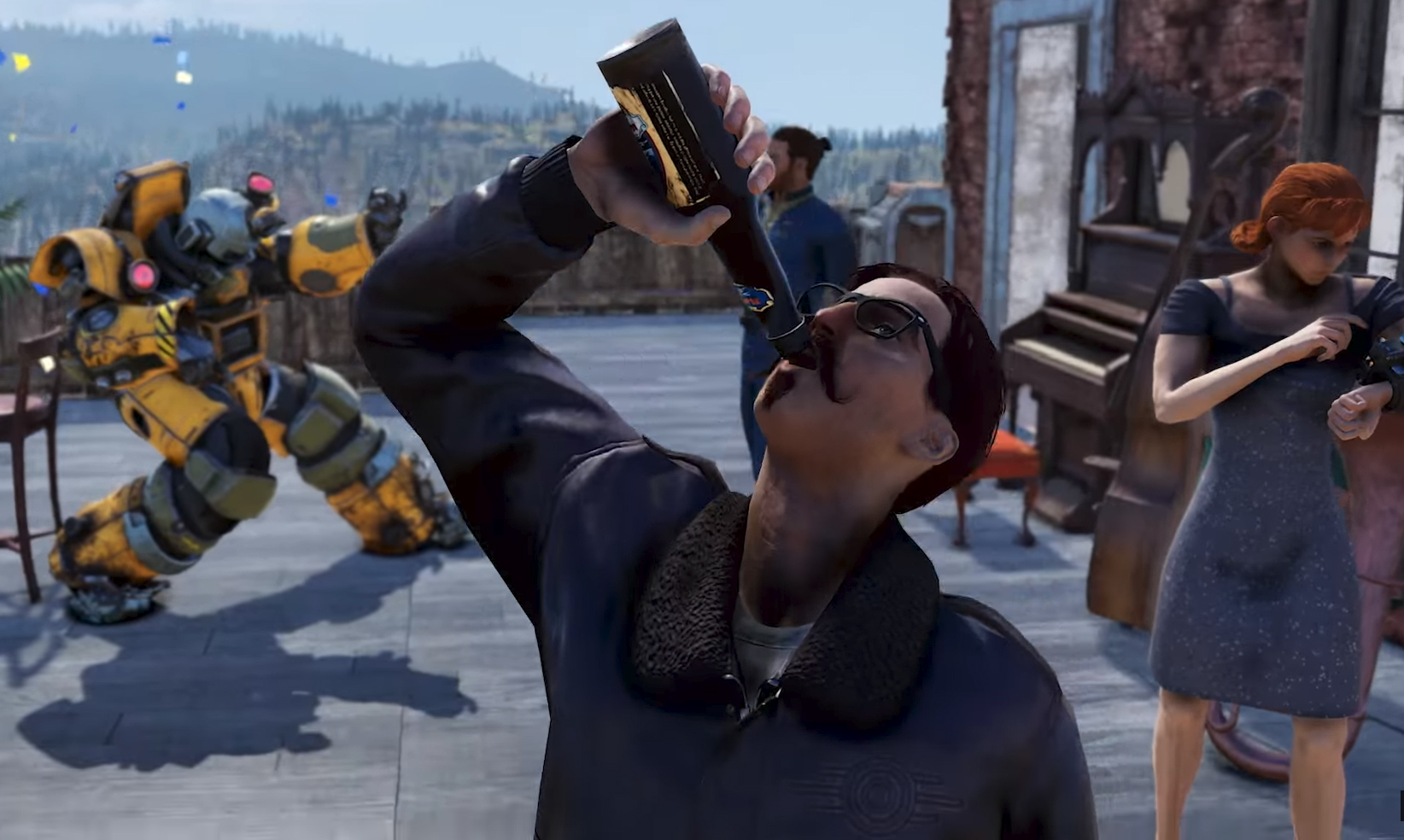Report says Fallout 76 development was plagued by crunch and poor leadership
The multiplayer Fallout game was a mess when it launched in 2018, and this may be why.

Fallout 76 was not in a great state when it launched in 2018—in fact, it earned a spot in our list of worst launches in PC gaming history—and a new Kotaku report on the game's development may shed some light on why. Interviews with current and former employees of Bethesda Softworks and parent company ZeniMax reveal a development process that was light on leadership, heavy on crunch, and hindered by inter-studio rivalries.
The report says Fallout 76's development was particularly rough on testers, who worked 10-hour days, six days a week, in the months leading up to release. The situation unfortunately did not improve when the game went live, as it was wracked with bugs and missing a number of basic features. That brought grotesque but predictable gamer rage into the equation: One tester told the site about a bug report that said, "I am going to take a gun and go to the QA department and shoot all of them."
That unhappiness didn't come as a surprise to many developers on the project, according to the report. The absence of NPCs was a particular point of concern for some: One source said that decision, which was supported by executive producer Todd Howard, was necessitated by the challenges of adapting the Creation Engine, previously used in Skyrim and Fallout 4—both singleplayer games—to a multiplayer environment.
Fallout 76 was also Bethesda's first live-service game, and management reportedly did not anticipate the sheer scale of the task. Concerns about griefing, stability issues, and questing were raised by some designers but dismissed by studio leadership, while in-game event designs were hobbled by things like uncertainty about how many players would be on a server. Some senior developers were reportedly less than excited about making a live-service game in the first place, and multiplayer development resources weren't effectively deployed.
"While we had experienced multiplayer designers [in both Rockville and Austin], they were routinely sidelined and ignored," one source said. "During development, our design director Emil [Pagliarulo] didn’t seem to want to be involved with the product at all. He didn’t want to have any contact with it…or read anything that we put in front of him."
Ironically, it sounds like Bethesda was relying on its version of "BioWare magic" to make Fallout 76 succeed. The studio has a well-established history of creating massive, major hits with relatively small teams, and apparently expected to do the same with Fallout 76. That, of course, led unavoidably to crunch: One source described it as "voluntold overtime," because employees were told that if nobody volunteered to work a weekend, the whole team would be called in.
It doesn't sound like the situation has changed appreciably since Microsoft's acquisition of Bethesda in 2021. Sources said Microsoft is taking a largely hands-off approach to Bethesda for fear of upsetting the balance of a studio that, by all external appearances, is firing on all cylinders.
The biggest gaming news, reviews and hardware deals
Keep up to date with the most important stories and the best deals, as picked by the PC Gamer team.
The full report goes into significant depth into working conditions at Bethesda, and is particularly noteworthy in light of the growing push toward unionization in development studios. Read the whole thing at Kotaku.

Andy has been gaming on PCs from the very beginning, starting as a youngster with text adventures and primitive action games on a cassette-based TRS80. From there he graduated to the glory days of Sierra Online adventures and Microprose sims, ran a local BBS, learned how to build PCs, and developed a longstanding love of RPGs, immersive sims, and shooters. He began writing videogame news in 2007 for The Escapist and somehow managed to avoid getting fired until 2014, when he joined the storied ranks of PC Gamer. He covers all aspects of the industry, from new game announcements and patch notes to legal disputes, Twitch beefs, esports, and Henry Cavill. Lots of Henry Cavill.

